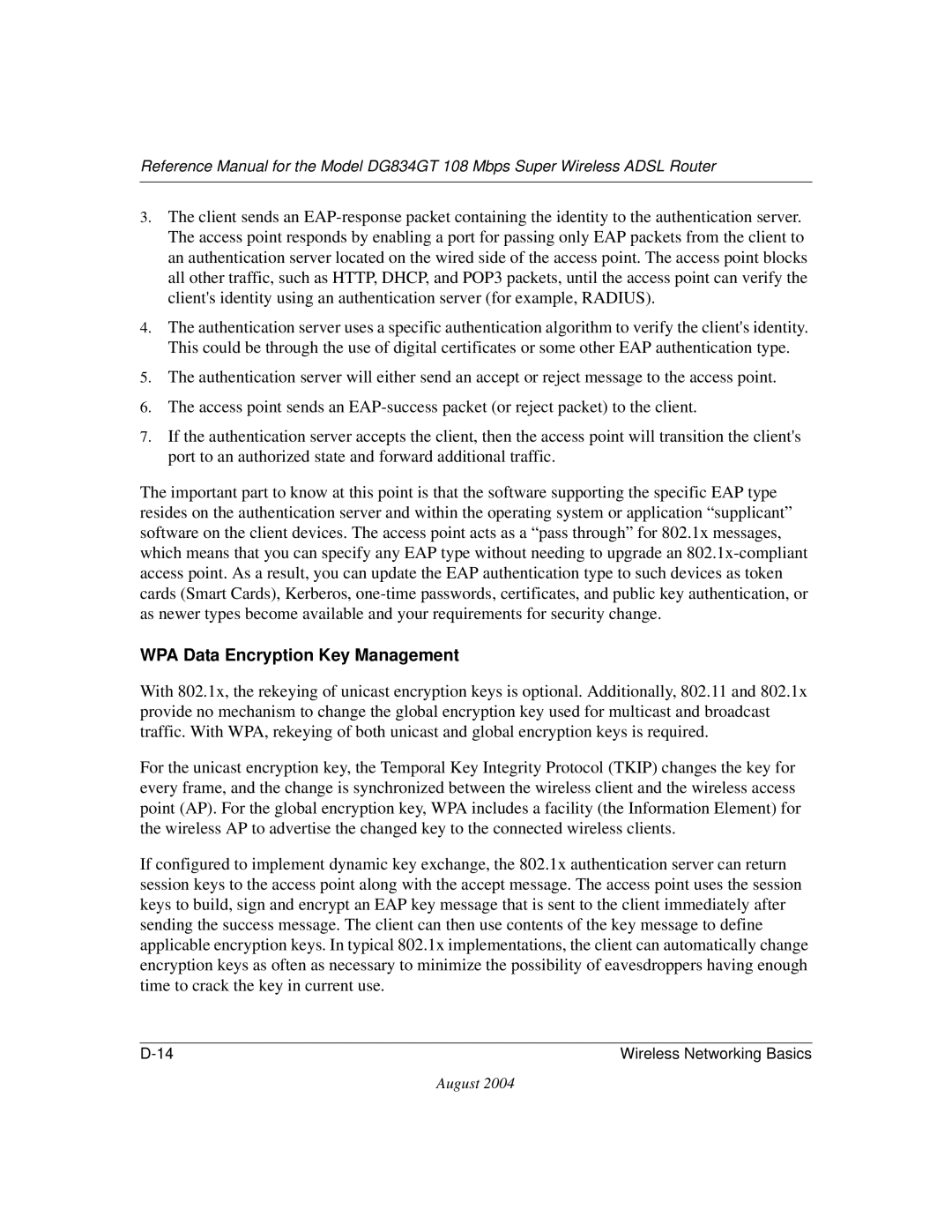DG834GT specifications
The NETGEAR DG834GT is a versatile wireless ADSL2+ modem router that is widely recognized for its reliable performance and impressive feature set. As an all-in-one solution, it caters to the needs of both home and small office users who require stable internet connectivity combined with advanced networking capabilities.One of the standout features of the DG834GT is its impressive wireless performance, which supports wireless 802.11g technology. This allows for wireless speeds of up to 54 Mbps, making it suitable for common internet activities such as web browsing, email, and streaming media. For users seeking enhanced range and reliability, the modem incorporates NETGEAR's patented Smart Wizard technology, which simplifies the installation process and ensures optimal wireless coverage throughout the area.
The DG834GT also supports ADSL2+ internet connections, providing a robust bandwidth of up to 24 Mbps, depending on the service provider and distance from the exchange. This means users can take full advantage of high-speed internet services, allowing for smooth simultaneous activities like online gaming and video conferencing.
Security is another important aspect of the DG834GT, featuring a robust firewall and support for WPA/WPA2 encryption, ensuring that user data remains secure. The modem also includes parental controls, enabling users to restrict internet access at certain times or filter content, making it ideal for family use.
In addition to its wireless capabilities, the DG834GT comes with four Ethernet ports, offering the flexibility to connect multiple wired devices. This makes it a great option for users who require stable connections for gaming consoles, desktop computers, or network printers.
Performance-wise, the NETGEAR DG834GT is equipped with Quality of Service (QoS) capabilities, allowing users to prioritize bandwidth for specific applications and devices. This ensures that essential tasks, such as video streaming or online gaming, receive the necessary bandwidth to function smoothly without interruption.
Overall, the NETGEAR DG834GT combines advanced technology, ease of use, and a comprehensive feature set, making it a popular choice among consumers looking for reliable ADSL connectivity and robust networking options. With its ability to support multiple devices and deliver high-speed internet, it remains a go-to solution for users navigating the demands of modern online life.
